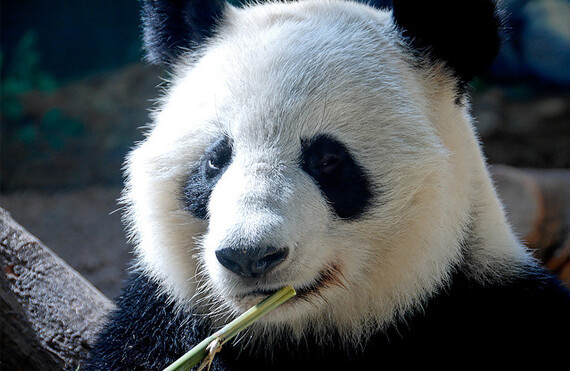The visit of Hu Jintao to Japan on May 6–10, 2008, was notable for the evident mutual desire to avoid controversy over the existing or potential areas of tension between China and Japan. The formal agreement, signed the day after Hu's arrival, set the tone, while the Chinese president's words—in support of a "mutual strategic relationship," and even of the Japanese ideal of a new "post-postwar era" in Chinese-Japanese relations—signaled a willingness to move away from the backward-looking attitudes of his predecessor Jiang Zemin, who in 1998 lectured his hosts about Japan's war guilt. The friendly atmosphere and positive body language aside, however, what does the "warm spring" visit reveal about the current state of this pivotal relationship?
The politics of symbolism is one route to an answer. This is an area with the capacity to divide Beijing and Tokyo, but also to connect them. The game of ping pong between Hu Jintao and star Japanese player (and Olympic torchbearer) Ai Fukuhara—watched by the president's host, Japanese prime minister Yasuo Fukuda—was one example; even more potent was the timely opportunity to engage in "panda diplomacy" provided just before Hu's arrival by the death on April 30 of 22-year-old Ling-Ling, the last remaining inmate of the panda exhibit at Tokyo's Ueno Zoo. Chinese and Japanese politicians had a perfect opportunity to symbolize a new era of friendship, seized by Hu with the offer of the loan of two giant pandas as a temporary replacement.
There is an echo here of 1972, when the normalization of relations between the two countries was celebrated by China's loan of four pandas to Japan. They were a huge hit at a time when very few Japanese traveled abroad and the opportunity to see such rare creatures at close quarters was limited.
The revival of panda diplomacy may represent nostalgia for the Japanese, both for a time of better bilateral relations and also for the high-growth Showa era in Japan, argues political scientist Koichi Nakano. In recalling those "simpler times," he says, "The panda card may affect the views of those who are nostalgic for the days when hundreds of Japanese lined up in front of the cage to catch a glimpse of the panda."
A Climate of Distrust
Yet as if to underline that there can be no easy return to the past, China's panda offer was also met with calls by Japanese wildlife groups to stop the trade in such endangered species. For his part, the populist Tokyo mayor Shintaro Ishihara was unsentimental about Ling-Ling: "Well, all living things die, and it's a panda, so it will also die. So it's not really something you are going to shed tears over. The world is small now; if you want to see a panda, there are many places you can travel to see one."
Ishihara is well known as a conservative critic of China, but his comments may reflect a more general Japanese skepticism about China's panda diplomacy compared with the optimistic attitudes of thirty-five years ago. The intervening years have seen the development of a more ambivalent Sino-Japanese relationship, and perhaps a more diverse Japanese public opinion.
Thus, symbolism has its limits: ping pong, pandas, and political platitudes are themselves not enough to reestablish warm ties. Most importantly, the Japanese ideal of a "post-postwar era" seems to have little currency in China. Many ordinary Chinese remain unconvinced by sixty years of Japanese pacifism and insist on a public apology for Japanese war crimes in China. And, in an example of how symbolism can embitter, it is easily imaginable that relations could be derailed by a Japanese leader visiting the controversial Yasukuni shrine to Japanese war dead. The "history problem," particularly protests over the content of a school textbook, was the focus of anti-Japanese riots in China in 2005 (see Isabel Hilton, "China and Japan: a textbook argument" [April 20, 2005]); it is also the main reason why most Chinese are opposed to Japan having a permanent seat on the United Nations Security Council.
In Japan, negative perceptions of China are not as strong or profound as Chinese animosity toward Japan. But Japanese people may be more resistant to purely symbolic diplomacy. The riots in Tibet have had some impact on Japanese public opinion. But the issue most revealing of Japanese suspicion of China is the dispute over chemical poisons found in packages of frozen dumplings shipped from China to Japan. The "dumplings controversy" was front-page news for a week in January–February 2008, as Japanese reporters described what seemed to be cover-ups and inconsistencies by the Chinese manufacturers. The facts remain unclear, though many Japanese suspect Chinese foul play, including the possibility that someone (perhaps a Chinese factory worker) intentionally attempted to poison the food supply. The Chinese authorities deny any such allegation.
Across the Divide
Indeed, the economic, social, and cultural bonds between China and Japan have been growing even through years of political tension and are now stronger and deeper than either side may have been prepared to admit. Their bilateral trade relationship—worth $236.6 billion in 2006, and now larger than the U.S.–China equivalent—is at least acknowledged as a source of ties as well as tensions; but less often noted are other connections between the two countries that may become a source of longer-term cooperation.
Hu Jintao himself provided examples of these ties. Hu is noted to have more personal contacts with Japan than with any other foreign country. While for an older generation of Chinese leaders the most familiar foreign country was the Soviet Union, and for a younger generation it is the United States, for Hu's political generation Japan is the foreign country its members have had the most contact with, particularly through the bilateral exchanges of the early 1980s. In an interview with Japanese reporters two days before his trip, Hu even mentioned his admiration for the popular television drama Oshin, a story about a tenacious Japanese family matriarch who experiences all the tumult of 20th-century Japan.
True, most Chinese of Hu's age would know this series, which was nearly as popular in China as it was in Japan. It is interesting to note that the same series was mentioned by Ronald Reagan during a visit to Japan when his close ally Yasuhiro Nakasone was prime minister in the 1980s (see Takashi Inoguchi, "America and Japan: the political is personal" [17 June 2004]). But more broadly, Hu's reference reflects the way that China, despite enduring brutal occupation and war, has absorbed many elements of modern culture from Japan. It is hard to imagine a Western leader acquiring or displaying the same cultural familiarity with Japan.
In addition to these cultural threads, there are profound social links between these countries. For most of the past century, China has been the source of the largest number of foreign students in Japan. Chinese represent over two-thirds of all the foreign university students and the majority of foreign "trainees" (de facto guest workers) in Japan. Chinese now top the lists of foreigners marrying Japanese men and women, and of foreigners naturalizing as Japanese citizens. Within a few years, the total number of Chinese living in Japan is likely to surpass even the long-term Korean population.
Moreover, these human flows are in both directions. As the largest foreign investor in China, Japanese managers and engineers have long been a presence in Chinese cities. More recently, Japanese residents in China have expanded to include thousands of young people studying Chinese, working at entry-level wages for Japanese and Chinese firms, and running their own small businesses in China's major cities. In Shanghai, the Japanese consulate estimates that there are roughly 100,000 Japanese in the city at any given time, making the Japanese the largest foreign population in the city. Japanese also top the list of nationalities of foreign spouses in international marriages registered in Shanghai in recent years.
Although these demographic flows are small by the scale of (for example) United States–Mexico flows, they provide an important set of links and a layer of mutual understanding that runs deeper than the nationalist vitriol often found on internet discussions.
A Test of Persuasion
In his weekly column in the liberal Asahi Shimbun (May 10, 2008), Chinese columnist Mo Bangfu, who has himself lived in Japan for more than twenty-five years, compares Japan and China to an old couple—by living with one another for so long have come to resemble each other in appearance and habits. These include both good and bad traits, he argues. With an element of hyperbole, he compares Japanese self-censorship of a recent film about the Yasukuni shrine to Chinese censorship during the Cultural Revolution. But he also expresses the hope that China will come to resemble Japan in its democratic resistance to these forms of self-censorship and repression.
Perhaps Mo Bangfu is simply indulging in the same naive aspirations that have motivated U.S. "engagement" with China during the past several decades, or which figured in the panda diplomacy of the China-Japan normalization period in the early 1970s. But it is also possible that Japan may in the long run return to its historic role as a progressive cultural influence on neighboring China, gradually mending the wounds of imperialism and war that over the past century ruined their historically intimate but often conflictual coexistence. It is even conceivable that Japan could be inflected with some of the dynamism and optimism of contemporary China.
In this more optimistic view, the economic, social, and cultural bases for a healthy and more equal association between China and Japan already exist. Symbolism may have its limits, but it can also be a measure of underlying realities. China's foreign minister Yang Jiechi has described his president's trip as "a complete success." The test now will be Hu's ability to persuade the Chinese people that this is an improving relationship with a friendly neighbor. If he can, then in retrospect this visit may indeed acquire real political importance.
![]() This article is licensed under a Creative Commons License. Republished with the kind permission of openDemocracy.net.
This article is licensed under a Creative Commons License. Republished with the kind permission of openDemocracy.net.




